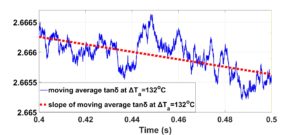March 2022

Extending some of my previous work, I developed a digital twin for overhead conductors that detects an approaching forest fire and de-energizes the affected lines in a timely manner and not preemptively. The work has just been accepted in the IEEE Transactions on Power Systems (preprint here).
In California (CA) and elsewhere, the risk of overhead conductors igniting forest fires or adding seats to on-going ones is very real and extensive. In CA, PG&E’s overhead conductor equipment was determined to be the reason for the 2018 Camp fire, leading to law suits that caused the utility’s bankruptcy. After restructuring, the company updated its practices with preemptive disconnections of large parts of its grid during days of high risk of fire. The new practice disrupted service to thousands of customers, in most cases unnecessarily. Hundreds of new suits threatened PG&E with a second bankruptcy in 3 years.
Phasor Measurement Units (PMUs) have been widely adopted across grids. PMUs may be installed along a line in distances as close as a 1-2 miles in between. This gives rise and basis to the idea of real-time monitoring of line impedance for any reasons of variation. As resistance increases with ambient temperature (not proportionally), steep decreases in the inductance/resistance ratio (tangent of the impedance phasor – tanδ in the figure) of an overhead conductor may indicate that a forest fire burns near said conductor and it should, thus, be disconnected.

The in silico testing under numerous worst case scenario conditions (no solar heating effect, broad measurement error intervals, synchronization errors, etc.), showed that the proposed method detects some cases of a forest fire approaching a conductor, in sub-second times and at extremely low false positive rates. In the next steps, I plan a collaboration with interested utilities and the US Forest Service for field testing.
I want to thank CMU ECE’s MSc student (at that time) and co-author Uday Sriram for his help in setting up the tests, Dan Dietmeyer from SDG&E for informing me about PMU deployments in CA, Farnoosh Rahmatian from NuGrid Power for lending his expertise on instrument transformers and Jeff Dagle from PNNL for his crucial comments in the earlier stages of this work.